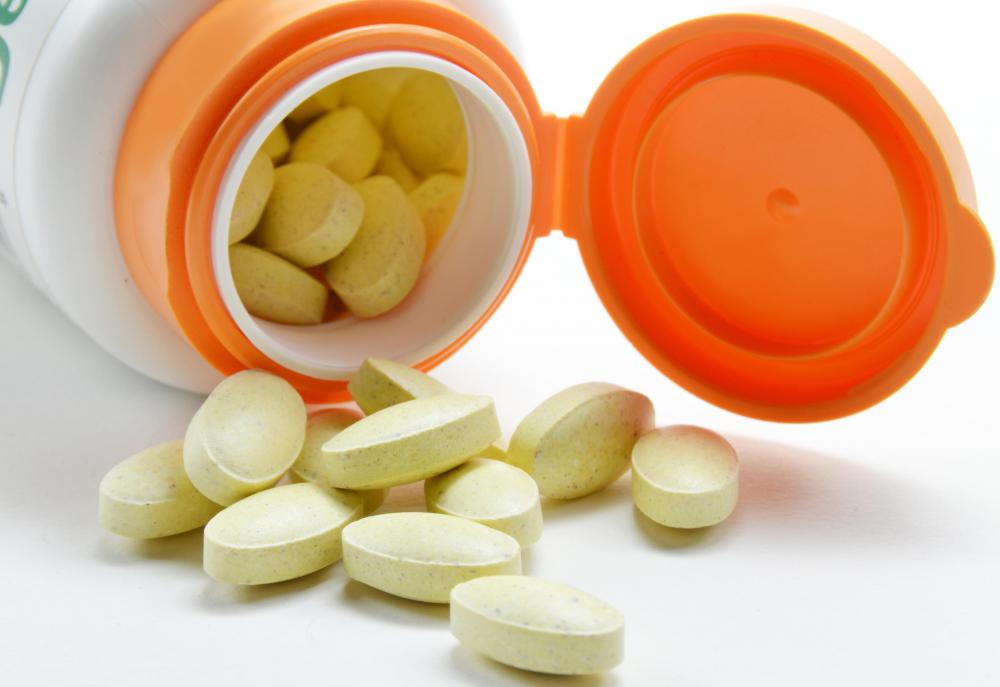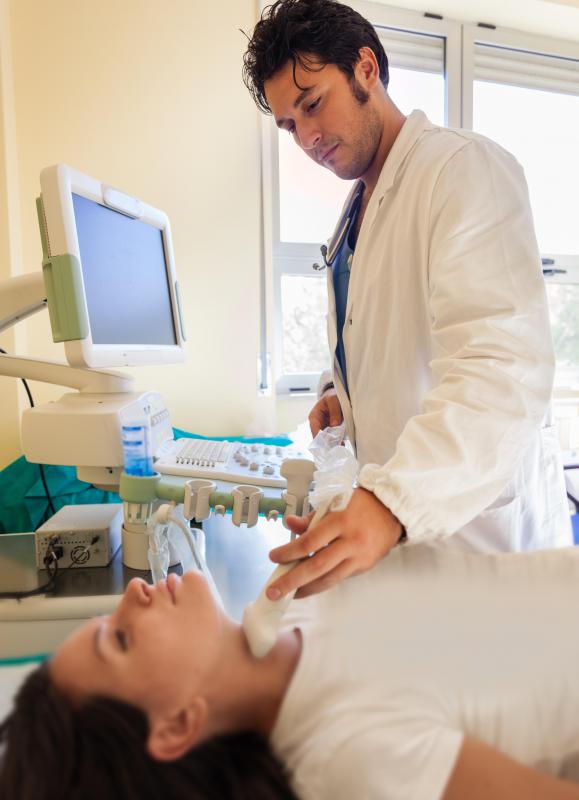At TheHealthBoard, we're committed to delivering accurate, trustworthy information. Our expert-authored content is rigorously fact-checked and sourced from credible authorities. Discover how we uphold the highest standards in providing you with reliable knowledge.
What Is the Difference between Thyroxine and Triiodothyronine?
Thyroxine and triiodothyronine, or T4 and T3, are the main thyroid hormones, and differ in amounts produced, how they are made, and their strength. They should also be noted as having great similarity; thyroxine has the ability to transform into triiodothyronine, and should be viewed as a precursor of it. Ultimately, it is T3 that has the most effect on the majority of cells in the body, but it would not exist without T4, so they are both vital hormones. Another way these chemicals can be compared is by assessing their benefits as prescription drugs.
The thyroid hormones are produced in response to thyroid stimulating hormone, which is made in the pituitary gland. One clear difference between thyroxine and triiodothyronine is noted in how much of each the thyroid gland produces. About 80% of the total production is thyroxine, and only 20% is triiodothyronine.

Since T3 acts on most of the body’s cells, this production might not seem adequate to the task, especially since most of the hormone gets bound in proteins and only a tiny amount is left to act on other cells in the body. It is enough, however, because T3 is also made outside of the thyroid gland. In certain organs, like the liver, free thyroxine is stripped of one of its four iodine atoms. The result is new production of T3. In this process, it's easy to see the relationship of thyroxine and triiodothyronine, as T4 is essential to make adequate amounts T3.

As this conversion continually repeats, more T3 is made and can then have a direct effect on various parts of the body. It helps with calorie regulation, metabolism, temperature control and production of key neurotransmitters. In the right supply, triiodothyronine affects numerous processes and has impact on physical and mental health. Comparatively, T4’s role is a little less direct, but it exists to be made into the much stronger T3.

Sometimes, patients who have low thyroid issues want a direct comparison of the various medications containing thyroxine and triiodothyronine. Until about the mid 20th century, doctors were not aware that T4 was made into T3 and they often prescribed both hormones together. Since triiodothyronine is so much stronger it could induce hyperthyroidism easily. Once the relationship between the two hormones was clearly established, it didn’t make sense to prescribe both drugs.

Presently, most doctors only prescribe thyroxine because it will be made into T3. Occasionally, patients don’t tolerate thyroxine well and a case is made for prescribing much smaller amounts of triiodothyronine, instead. There is still some concern that T3 generally causes people to have hypothyroidism for a few hours each day after they take their medication. Concerns also exist about the stability of triiodothyronine in pill form, and in many cases, doctors prefer to prescribe thyroxine.
AS FEATURED ON:
AS FEATURED ON:

















Discuss this Article
Post your comments